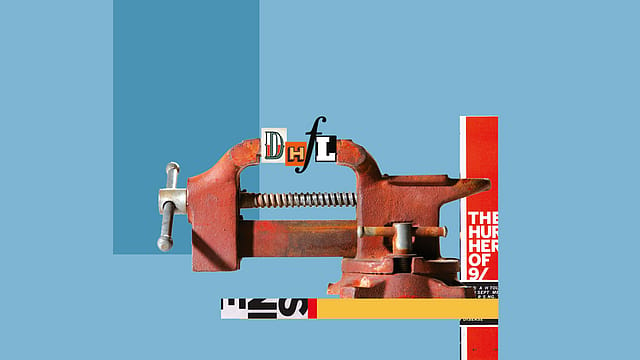DHFL: In search of a breather
ADVERTISEMENT

Sometimes, all it takes is a single incident to create a domino effect that spreads across sectors and beyond. In the aftermath of the fiasco at infrastructure lending conglomerate Infrastructure Leasing & Financial Services (IL&FS), non-banking financial companies (NBFCs) faced a credit crunch. And the tornado unleashed by the liquidity crisis has left Dewan Housing Finance Corporation Ltd (DHFL)—India’s second-largest housing finance company (HFC)—reeling in its wake.
After averaging ₹667.23 last August, DHFL’s share price hit a 52-week high of ₹690 on September 3. By May this year, it was averaging ₹111.6. And on June 18, a little under 200 trading days later, DHFL touched a 52-week low of ₹62.55 after it was reported that the Employees’ Provident Fund Organisation was planning to redeem half of its investments in the company before they matured.
The slide started late last September. DHFL’s share price tumbled after DSP Mutual Fund sold a portion of the HFC’s debt securities at a loss. But rating agencies assured tense investors that DHFL’s liquidity was okay. It was too good to last. In November, CRISIL reduced the quantum of DHFL’s commercial papers (CPs) from ₹15,000 crore to ₹8,000 crore on the HFC’s request. While DHFL had gross nonperforming assets (NPAs) of only 0.96% as of end-September 2018, CRISIL warned that “while current delinquencies are not high, if the funding situation for non-banks does not stabilise over a period of time, asset quality challenges could manifest”.
December 2025
The annual Fortune 500 India list, the definitive compendium of corporate performance, is out. This year, the cumulative revenue of the Fortune 500 India companies has breached $2 trillion for the first time. Plus, find out which are the Best B-schools in India.
Things went from bad to worse as DHFL mobilised liquidity through securitisation, which is essentially selling cash flows from its good loan accounts to third parties. Of the ₹16,290 crore it raised between September 21 and December 31, ₹11,873 crore was procured in this manner. CRISIL noted that since these funds were “primarily used to repay borrowings” it placed its rating for CPs on watch with negative implications.
The bad run continued, with CRISIL continuing its downgrades through March, April, and May till in June it rated DHFL’s CPs at ‘D’ or default. This was sparked by the HFC delaying interest payment of ₹1,150 crore on some of its nonconvertible debentures owing to inadequate liquidity. Meanwhile, DHFL brought down the quantum of rated CPs to ₹850 crore.
Analysts interpreted DHFL’s delay in making the interest payment as a crisis looming for NBFCs. In a June 6 note, CLSA analysts Aashish Agarwal and Prakhar Sharma said the delay, as well as a recent default by IL&FS, and downgrade of credit ratings of NBFCs could accentuate a contagion risk in financial markets. DHFL managed to avert a default by selling off its stake in affordable housing finance firm Aadhar Housing Finance for ₹2,200 crore to private equity major Blackstone. Earlier, in March, DHFL had sold its 30.63% stake in education finance firm Avanse Financial Services.
This followed the sale of its 50% stake in mutual fund (MF) joint venture DHFL Pramerica to partner Prudential Financial. Meanwhile, MFs with exposure to the HFC’s debt securities are in a fix. According to Association of Mutual Funds in India (AMFI) guidelines, for securities with a ‘D’ rating, MFs have to take a haircut of 75% on senior-secured securities and 100% on subordinated/unsecured debt, Mumbai-based broking outfit JM Financial said in a June 5 note.
The exposure of the MF sector to the HFC’s debt securities is nearly ₹5,300 crore. The note added that even if DHFL “makes good the default”, a ratings upgrade cannot happen before three months according to norms. AMFI data for May shows debt flows (credit funds) have turned negative after some inflows in April, while liquid funds have seen inflows of ₹77,000 crore. In a June 10 note, Nomura noted that inflows in credit funds were negative to the tune of ₹7,200 crore in May and have remained weak in the past 18 months. “With large markdowns in significant number of mutual fund schemes due to DHFL’s interest payment delay, we believe investors will remain risk-averse and this could lead to potential outflows,” it noted. MFs’ funding had contributed to the higher growth for NBFCs/ HFCs in the past three-four years but since September 2018, it has come down by more than ₹1 lakh crore.
While DHFL waits for rating agencies to give it some respite, the crisis is taking a toll on investors in schemes with exposure to the HFC. The haircut that MFs have to suffer directly impacts their net asset value. Some MFs have begun to charge exit load to discourage redemptions, too. UTI Mutual Fund, on June 7, introduced an exit load in the UTI Treasury Advantage Fund, UTI Ultra Short Term Fund, UTI Short Term Income Fund, UTI Dynamic Bond Fund and UTI Bond Fund in order to safeguard the interests of existing investors in these funds. As DHFL continues in divestment mode to stay afloat, MF investors are hoping that the HFC gets a breather.
this story was originally published in the July, 2019 issue of the magazine.
